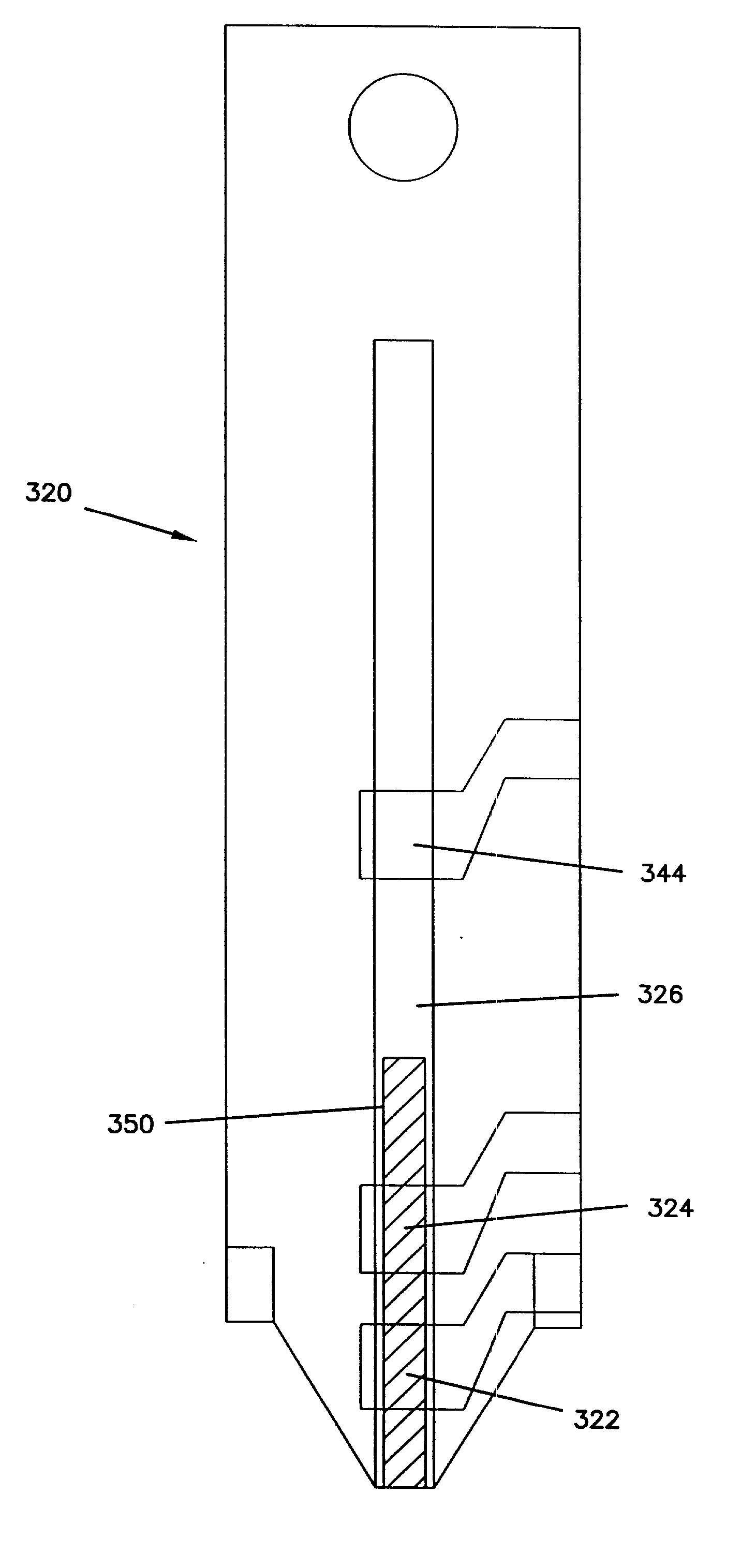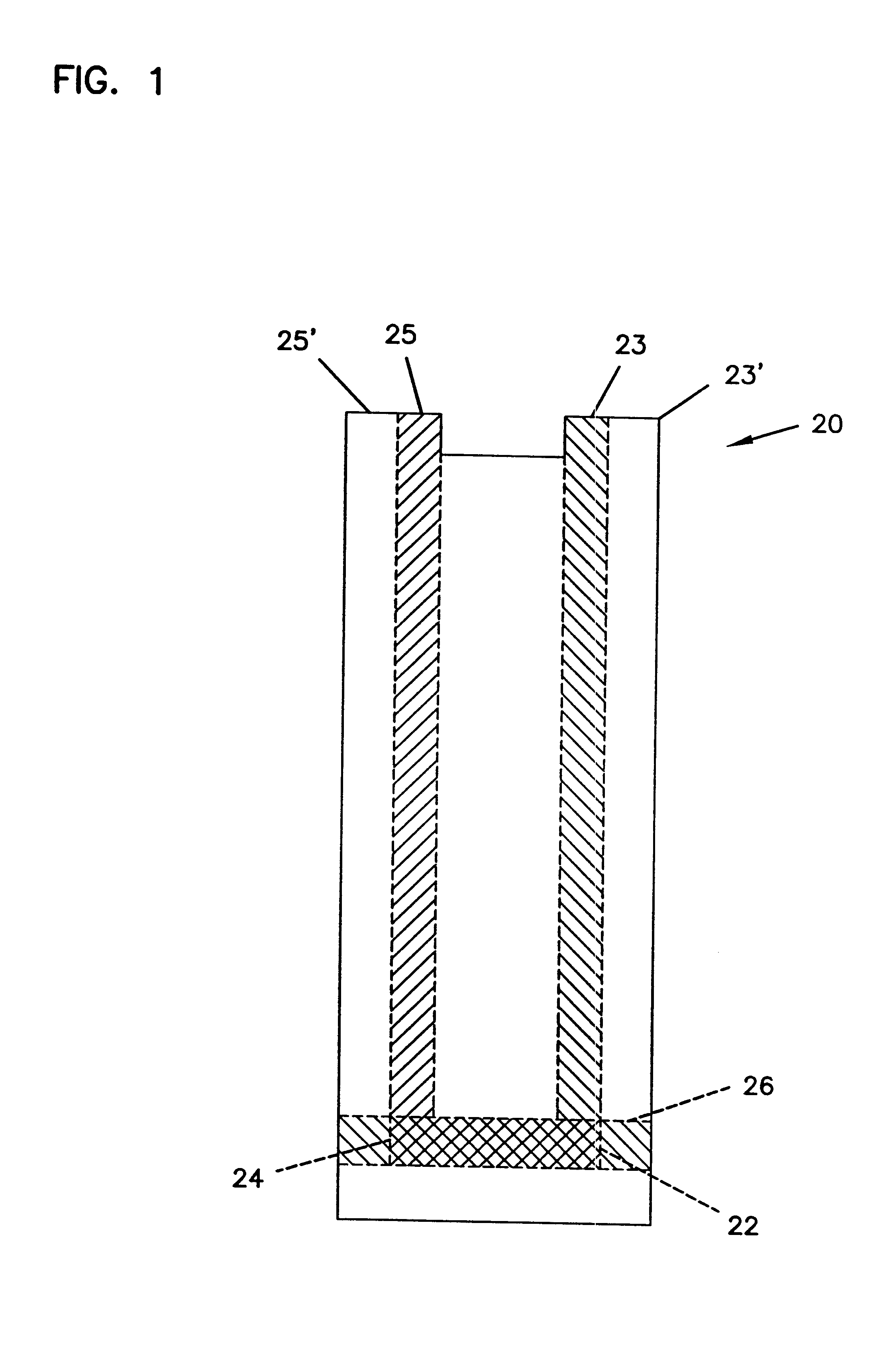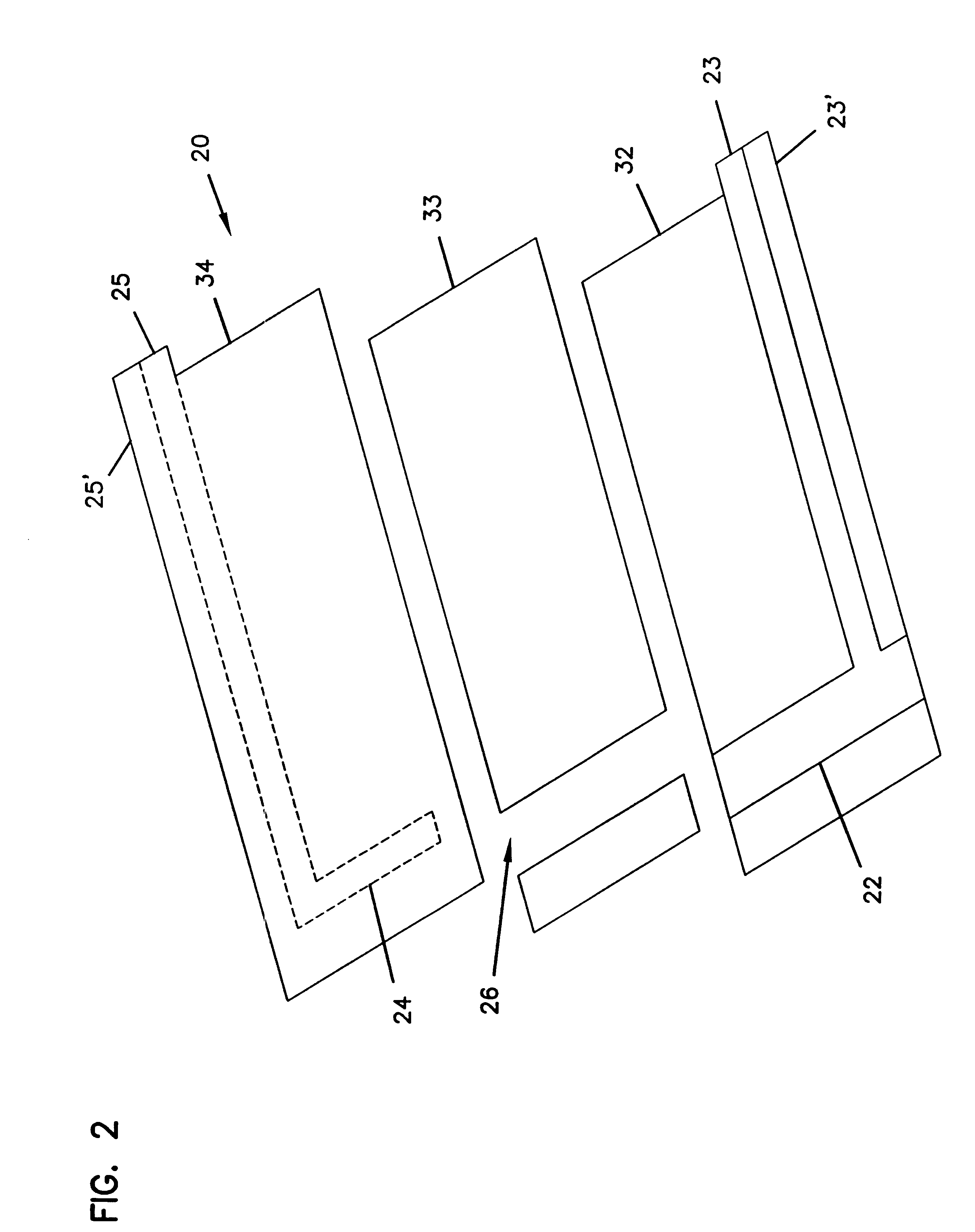Small Volume in Vitro Analyte Sensor and Methods
an in vitro analyte sensor, small volume technology, applied in the direction of immobilised enzymes, diaphragms, coupling device connections, etc., can solve the problem of inconvenient patient procedures, and achieve the effect of efficient and reliable methods
- Summary
- Abstract
- Description
- Claims
- Application Information
AI Technical Summary
Benefits of technology
Problems solved by technology
Method used
Image
Examples
Embodiment Construction
[0044] Detailed Description of the Preferred Embodiment
[0045] As used herein, the following definitions define the stated term:
[0046] An "air-oxidizable mediator"is a redox mediator that is oxidized by air, preferably so that at least 90% of the mediator is in an oxidized state upon storage in air either as a solid or as a liquid during a period of time, for example, one month or less, and, preferably, one week or less, and, more preferably, one day or less.
[0047] "Amperometry" includes steady-state amperometry, chronoamperometry, and Cottrell-type measurements.
[0048] A "biological fluid" is any body fluid in which the analyte can be measured, for example, blood (which includes whole blood and its cell-free components, such as, plasma and serum), interstitial fluid, dermal fluid, sweat, tears, urine and saliva.
[0049] "Coulometry" is the determination of charge passed or projected to pass during complete or nearly complete electrolysis of the analyte, either directly on the electrode...
PUM
| Property | Measurement | Unit |
|---|---|---|
| volumes | aaaaa | aaaaa |
| volume | aaaaa | aaaaa |
| volume | aaaaa | aaaaa |
Abstract
Description
Claims
Application Information
 Login to View More
Login to View More - R&D
- Intellectual Property
- Life Sciences
- Materials
- Tech Scout
- Unparalleled Data Quality
- Higher Quality Content
- 60% Fewer Hallucinations
Browse by: Latest US Patents, China's latest patents, Technical Efficacy Thesaurus, Application Domain, Technology Topic, Popular Technical Reports.
© 2025 PatSnap. All rights reserved.Legal|Privacy policy|Modern Slavery Act Transparency Statement|Sitemap|About US| Contact US: help@patsnap.com



